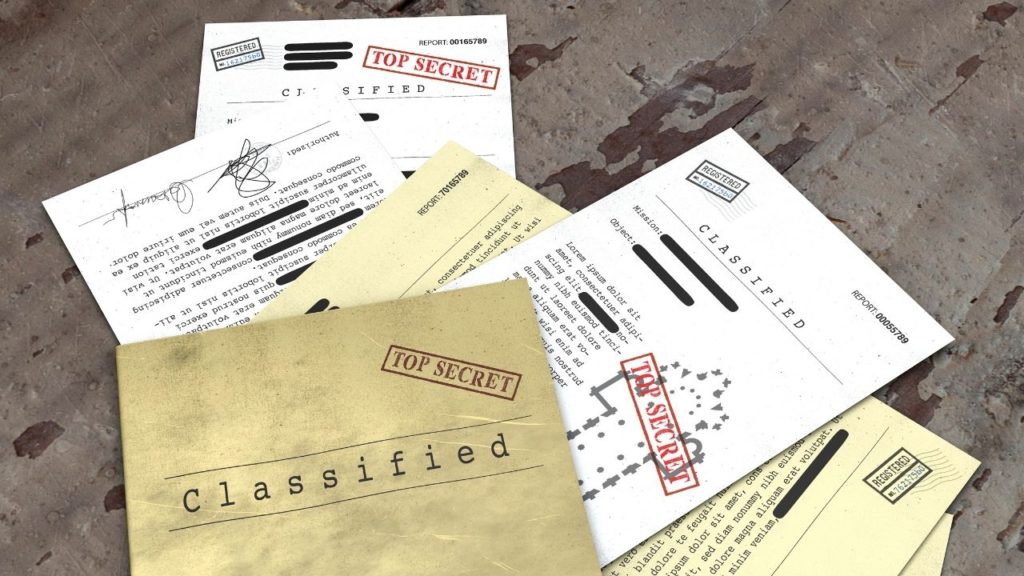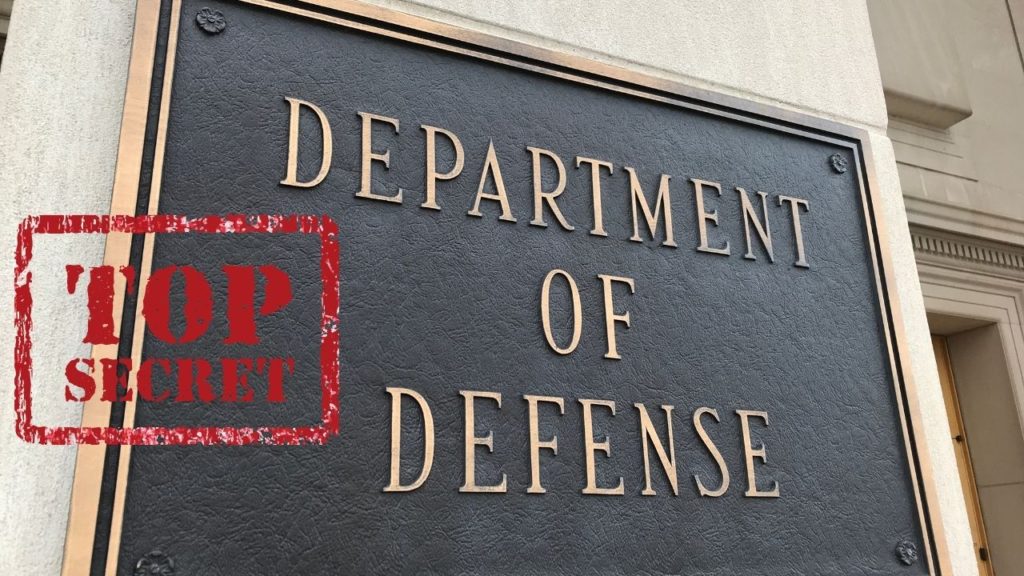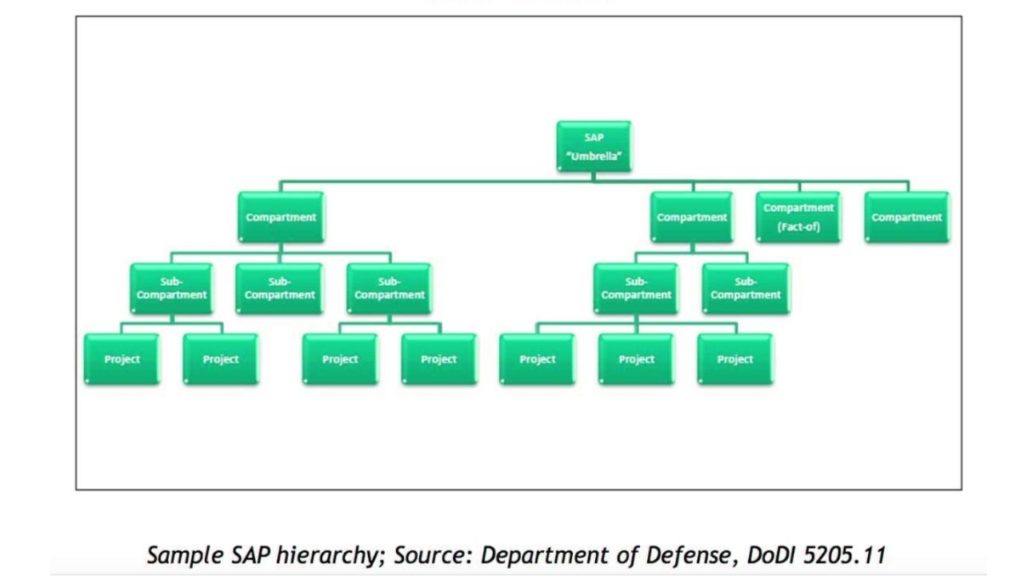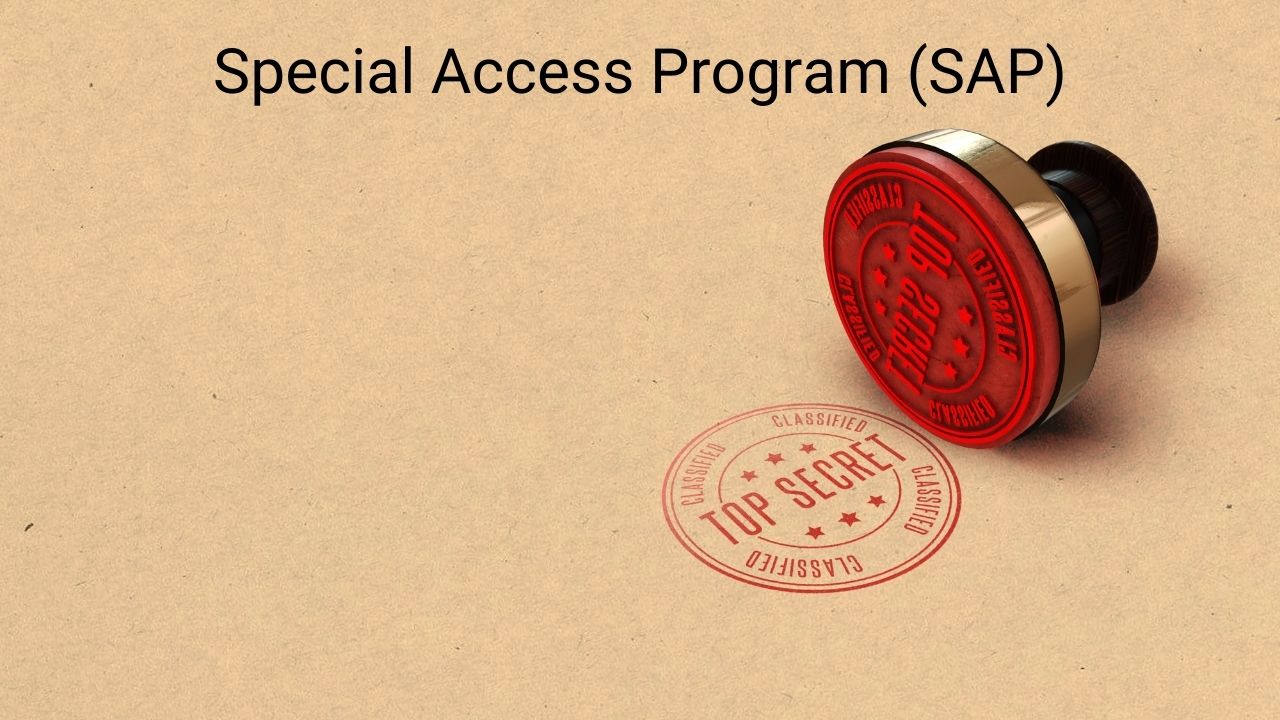The term “black projects” inspires dark imagery of government figures operating in contrast to a free and open society’s principles. But how is the Department Of Defense’s System Classified? And what is the “Special Access Program,” acronym—”SAP.”I set out to shed light on the secret processes involved in maintaining the very intricate ecosystem that works to protect the Pentagon’s most closely held secrets.
How Does the U.S. government protect and restrict access to highly classified information?
How the U.S. government protects and restricts access to highly classified information is through a set of compartmentalization protocols called “Special Access Programs,” acronym—”SAP.” SAPs are just a set of security protocols restricting sensitive information to only authorized and necessary people. So, now I will dig into The Department Of Defense’s Classified System.

How is National Security Information classified? And how is the department of defense’s system classified?
The deciding factor for how information is classified depends on how much damage an unauthorized disclosure would reasonably cause.
- Top Secret: – “Exceptionally grave damage to national security.”
- Secret: – “Serious damage to national security.”
- Confidential: – “Damage to national security.”
The Department of Energy, or DOE, utilizes two differing equivalent levels of security clearance.
- Q-Clearance: – Equivalent to a Top-Secret level clearance.
- L-Clearance: – Equivalent to a Secret level clearance.
Furthermore, a single SAP or Special Access Program can contain multiple components, each with different classification levels.
“Black Programs”
Moreover, according to the Center for Development of Security Excellence’s (CDSE) Special Access Programs Training Course, from the 1970s to 1980s, SAPs—referenced even within the government as “black programs”—were virtually exclusively restricted safeguarding DoD acquisition programs.

“Special Access Programs,” acronym—”SAP.”
By the mid-1990s, those secret workshops shed the “black program” moniker, opting to go by the more contemporarily well-known SAP or “Special Access Program.” In addition to the more dexterously smooth title, intelligence, operations, and support programs were added to the SAP, establishing the Special Access Program regime we’ve come to know today.
When viewing the term “special access program,” people envision one of the three categories within the Department of Defense.
- Acquisition SAPs:- Programs including research, evaluation, development, testing, modification, or procurement of new technologies. Moreover, according to the CDSE, Acquisition SAPs make up 75-80% of all DoD SAPs.
- Intelligence SAPs: – The planning and execution of sensitive, intelligence or counter-intelligence operations.
- Operations and Support SAPs: – Planning, implementation, and support of sensitive military enterprises.
Furthermore, separate from an objective category, all SAP’s (special access programs) fall under one of two protection levels:
- “Acknowledged” – Those are programs whose existence and purpose can be openly recognized. Only intimate details, like technologies, materials, or techniques, are kept secret. And funding for Acknowledged SAPs is unclassified mainly and can be readily seen in the government’s fiscal budget.
- “Unacknowledged”- This is the shy sibling of the SAP family. When an SAP is designated as “unacknowledged,” not only is a program’s purpose carefully guarded, as the name implies, its mere existence may be denied to everyone but a few who aren’t a part of the program. It should come as no shock; the funding for unacknowledged “special access programs” is either classified or is purposely hidden within the Federal budget.

The principal authorities for all those Special Access Programs
Serving on the secrecy mosaic’s front lines is the “Special Access Program Central Offices” (SAPCO). It thrives on compartmentalization, and by “central,” the DoD means there are three different types of SAP Central Offices.
- SAPCO or Component-Level SAP Central Office: – They can be found within each branch of the U.S. military. The Joint Chiefs of Staff. The Defense Advanced Research Projects Agency (DARPA). The MDA or Missile Defense Agency. The Component-Level SAPCOs is responsible for starting the prospective process for accessing an SAP. Once a Special Access Program has been installed, a Component-Level SAP Central Office working as the hands-on manager for the Special Access Program that falls under their scope.
- OSD SAPCO or Office of the Secretary of Defense-Level SAP Central Office: – It was installed to assist the Deputy Secretary of Defense. Furthermore, the Secretary of Defense-Level Central Office’s Office serves as the overlooking authority for all SAPs.
- DOD SAPCO or Department of Defense SAP Central Office: – Working to help streamline this entire fragmented, the Department of Defense SAP Central Office functions as an ambassador by communicating and advising the executive branch and Congress agencies on all matters relating to SAPs.
The Special Access Program administration structure
Spearheading the Special Access Program governance or administrative structure is the SAPOC or Oversight Committee. Its made up of a who’s who of Pentagon Under Secretaries, Assistant Directors, and Vice Chiefs. The Oversight Committee’s main role is to assist and advise the Secretary and Deputy Secretary of Defense in the governance, management, and oversight of all Department of Defense (DoD), Special Access Programs.
Ensuring that the limitation of secrecy to only a picked few isn’t a decision made in a vacuum, assisting the Special Access Program Oversight Committee is:
- Senior Review Group (SRG): – The main working-level body that governs the process of Special Access Program oversight.
- SAP Senior Working Group (SWG): – Gives recommendations to the Senior Review Group and works as a senior program protection forum coordinating, deconflicting, and integrating special programs.

Guarding Special Access Programs
In the span of SAP controls, OUSDI or the Office for the Under Secretary of Defense for Intelligence SAP Control Office fills the important role of monitoring and investigating counter-intelligence matters, security violations, or infractions of all Department of Defences SAPS.
Supporting OSDi’s Central SAP Office in this work is the Office of the Director of National Intelligence and the 17 individual agencies which make up the United States intelligence community. Reinforcing this mighty SAP Central Office, the U.S. Defense Security Service (DSS) provides operational assistance and security oversight for all DoD SAPs.
But the first line of defense in guarding the integrity of SAP secrecy starts with who is granted access to a secret program. So, regardless, if a person is a federal-civilian employee, or in the military, or a private contractor, many requirements must be met before working within an SAP.
Once inside an SAP, there are still many vital roles that help ensure each special access program’s secure integrity. And some of those are:
- The Government Program Manager (GPM), and their private industry equivalent, the Contractor Program Manager (CPM): – The person who oversees all overall aspects of a specific program.
- Program Security Officer: – The person responsible for all aspects of security in the program. Every SAP has a PSO. However, large or complex SAPS can additionally have extra Government SAP security officers or contractor program security officers to support the Program Security Officer.
Additionally, protecting who knows what, an SAP’s overarching scope and purpose can fall under one program “umbrella.” Nevertheless, multiple compartments, which can further break down into separate sub-compartments, and numerous projects can all emerge from under a single SAP umbrella.
So, it’s completely possible for a compartment, sub-compartment, or project not to have access or be aware of the work that’s going on in other sections of the same SAP.

Oversight Of Special Access Programs
All SAP or Special Access Programs are subject to federal and defense acquisition regulations. Therefore, all Special Access Programs can be audited and inspected by many oversight entities, including the DoD Inspector General or the Government Accountability Office.
Equivalently, oversight of SAPs isn’t merely left to agency directives and policies. Instead, it’s a matter of federal law.
All active acknowledged, and non-waived unacknowledged SAPs must submit reports to the House and Senate Authorization, Appropriations, and Intelligence Committees yearly by federal statute. Those yearly reports give committee members an estimated total budget request for the upcoming fiscal year, a short description of the program, including the number of persons involved, current issues, or the status of significant milestones and the program’s actual cost for each previous fiscal year.
Each member not assigned to one of the defense or intelligence committees may be granted access to non-waived special access programs. They receive permission from the ranking and minority members from each of the respective committees and with the Secretary or Deputy Secretary of Defense’s approval.
So, when it comes to Special Access Programs (SAPs), like virtually all government operations, they are mostly cumbersome bureaucratic affairs.
However, now you hopefully know how the underlying secrecy processes work.

